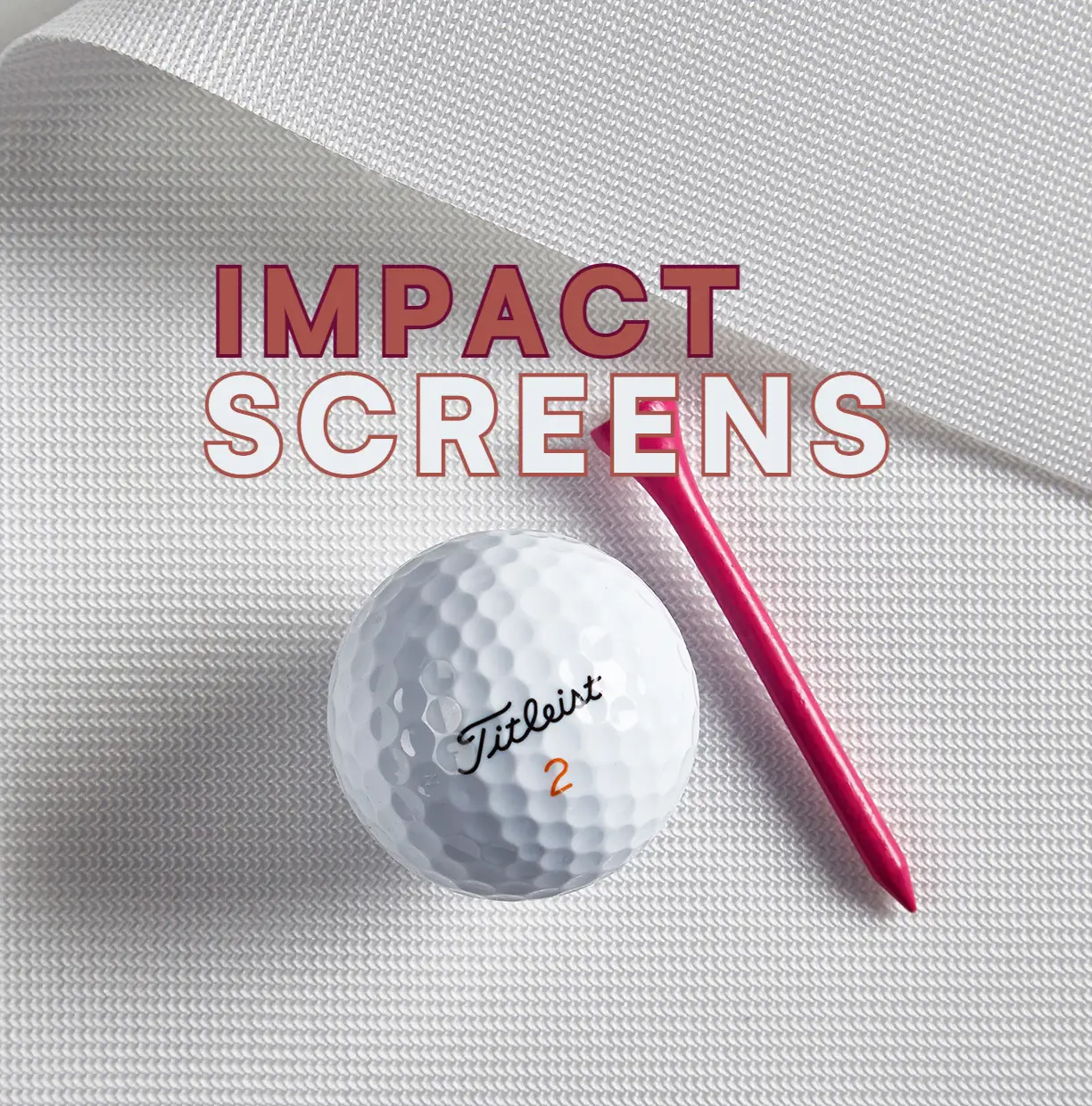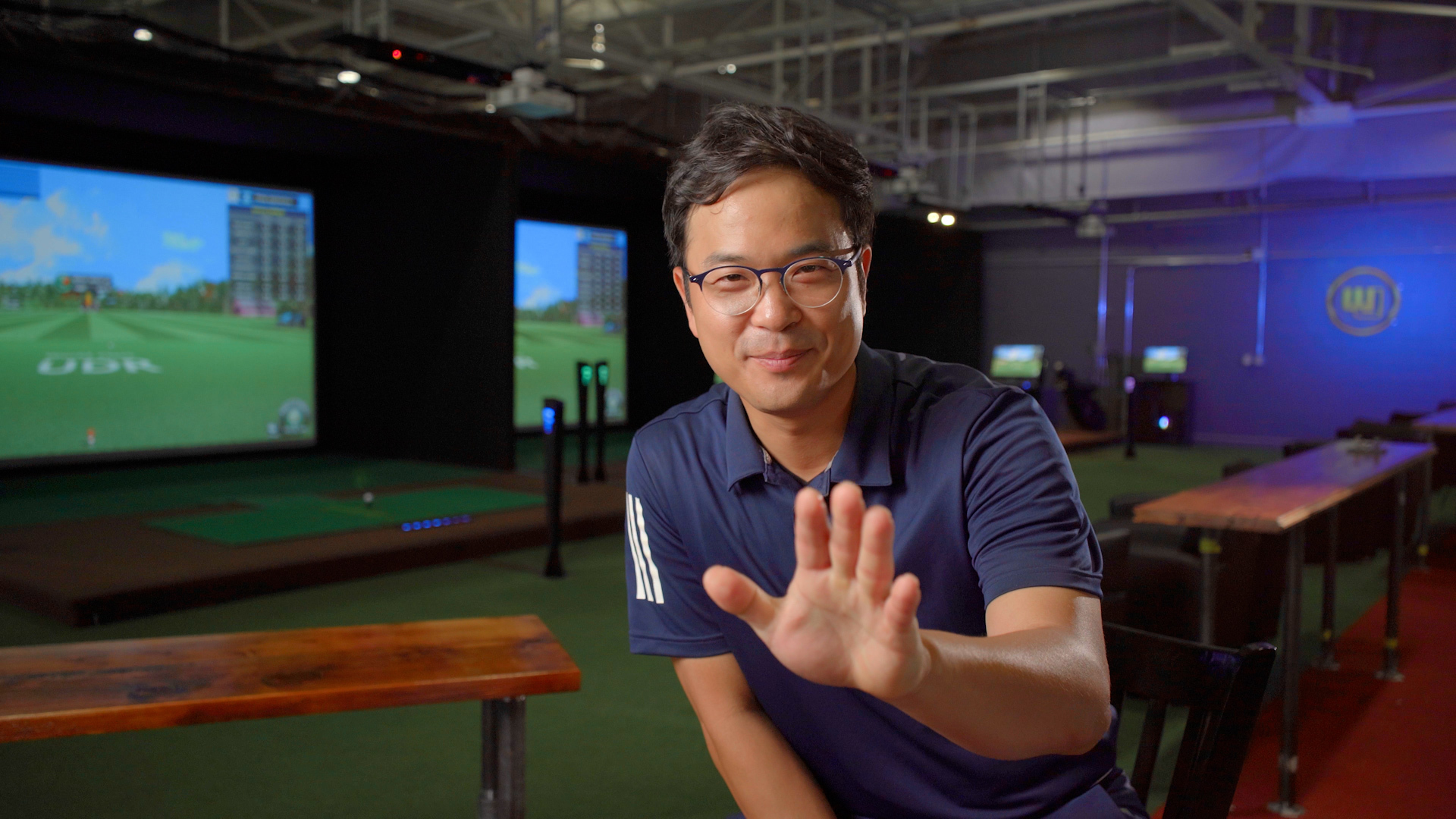Safety is every golfer’s main priority, but what should you do if you are experiencing the ball bouncing back off your screen? Impact screen bounce back is fairly uncommon apart from wedge shots which tend to travel up the screen and then back along the enclosure’s ceiling.
Ideal Impact Screen Bounce Back
Proper installation and a few safety recommendations will help ensure the ball does not bounce back more than a foot or two in most scenarios. Follow these tips and you can invite your shank artist friends over for a round of golf without taking one to the noggin.
Carl's Tip: You can even create your own safe golf simulator ball return through trial and error with some of the below adjustments!
1. Buffer Space
One of the easiest tips to implement is making sure you have buffer space both in front of and behind your screen. Allowing the screen to touch any firm surface, such as a wall, may cause safety issues that buffer space will easily help you avoid. In Carl's C-Series line of enclosures, the enclosure frame will create a built-in buffer of about a foot behind the screen, which in turn doesn't allow you to get too close to the wall.
Start by making sure you have the impact screen itself 12-16 inches in front of any surface. Additionally, if you are standing a minimum of 10 feet away from the screen when you swing, then you are off to a great start in reducing bounce back.

2. Proper Screen Installation
The proper screen tension will help you greatly prevent impact screen bounce back. For an amazing image install the screen so it is flat, however, also allow for some movement of the screen to avoid an install that is too tight or rigid. If you are experiencing issues, try removing a couple bungees or loosening the releasable zip ties from each side to reduce tension on the screen.
You may have one of our DIY Golf Simulator Enclosures or Pro Golf Enclosure Kits which are designed to be adjustable. It’s important to confirm the frame dimensions match the size specific diagram included in your kit. If the frame is bigger, it can cause the screen to be too tight.
(Conversely, if you are seeing too many waves and ripples in the screen adjust the frame to increase the tension on the screen in such a way that it enhances flatness and avoids rigidity. Seeing a wave or two shouldn’t be a big deal, but it shouldn’t look unprofessionally sloppy either.)
3. Screen Material
Impact screen bounceback should be a top consideration when making your buying decision. Carl’s Premium Golf Screens were developed with a three-layer material that includes a specialized spacer layer specifically developed to assist in noise reduction and minimize bounce back. If you own our Premium screen you’ve made a wise buying decision to help prevent ricochet.
4. Golf Enclosure Add-ons
 Prevent the ball from striking the frame using our foam inserts that slip behind the screen’s flaps and cover the pipes.
Prevent the ball from striking the frame using our foam inserts that slip behind the screen’s flaps and cover the pipes.
Need more safety on your DIY or Pro enclosure? Our foam inserts block the ball from hitting the pipe frame and slip behind the screen flaps and covers the pipes. These inserts are not visible from the front of your enclosure.
If you are looking for an alternative to our Foam Insert Kit you could also look into other foam/padding options. These are typically found at a hardware or craft store. Adding protection in front of the pipes will help to reduce the chances of a ricochet off the frame pipes.
You can also add safety baffles that hang down from the ceiling to help catch and knock down high-angle shots that might bounce off the screen. Safety baffles are strips of vinyl that hang down 12 inches for Pro Enclosures and 6 inches for DIY enclosures from the ceiling and can be placed at any distance from the screen as needed to block any rebound.

5. Accessories
Our customers have come up with some great ideas as well, such as using a softer mat or turf. The theory being an inexpensive, hard mat may reject the clubhead, causing the ball to bounce back up.
6. A Little is Not All Bad
Lastly, a little bounce back is not all bad. It's like having your own little golf simulator ball return.
If you are the type of person who only wants to use one ball and have the ball gently bounce back towards the tee ready for your next swing, then a little bounce might work for you.
In Conclusion
How to Stop Golf Impact Screen Bounce Back
Minimal bounce back is to be expected and helpful for ball return in a golf simulator. However, to eliminate safety concerns make sure you have the appropriate buffer space from tee-to-screen. Use safety baffles and foam cushions with a high-quality impact screen. And make sure you follow the instructions to install the impact screen.
Getting it right may take some trial and error, but if you use your noggin to achieve a great swing (and not as a ball stop) you can enjoy your golf screen as both a functional practice tool and a fun, immersive golfing experience.
For more great advice see our How to Extend the Life of your Golf Impact Screen article.
DID YOU KNOW: Carl can custom finish your impact screen in 125 different ways!




 Prevent the ball from striking the frame using our foam inserts that slip behind the screen’s flaps and cover the pipes.
Prevent the ball from striking the frame using our foam inserts that slip behind the screen’s flaps and cover the pipes.